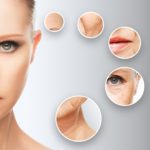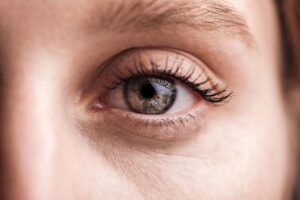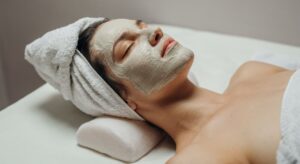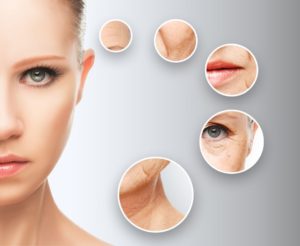Over the years, there have been significant advancements in aesthetic treatments. Presently, society is highly receptive and embracing of these cosmetic procedures. Botox and dermal fillers have emerged as the leading choices in the surge of popularity for non-invasive aesthetic procedures.
Non-surgical procedures like injectable fillers and Botox have gained immense popularity among individuals seeking a more youthful appearance. Their effectiveness in diminishing signs of aging without the need for invasive surgical methods is the primary reason behind their widespread acceptance.
Expand your knowledge about the purposes and distinctions of Botox and dermal fillers.
Botox
Botox, derived from botulinum toxin type A, is a drug that can be injected. This toxin is produced by a bacterium known as Clostridium botulinum. Although Botox is a toxin, when administered by doctors in appropriate amounts, it can provide advantages. It serves both cosmetic and medical purposes, and has been deemed safe in small quantities for many years.
Uses
Botox functions by inhibiting the nerve signals that commute between the nerves and muscles, thereby preventing the contraction of specific muscles. This ability not only helps alleviate particular muscular ailments but also enhances the visual aspect by diminishing the presence of fine lines and wrinkles. Its efficacy has been substantiated in the treatment of:
- crow’s feet
- frown lines or 11’s
- forehead creases
- chronic migraines
- excessive sweating (hyperhidrosis)
- eye twitching (blepharospasm)
- lazy eye (strabismus)
- limb spasticity
- neck spasms (cervical dystonia)
- overactive bladder (OAB)
- specific neurological disorders, like Bell’s palsy
Typically, it takes around 7 to 14 days for the treatment to fully show its effects. These effects typically stay for about 3 to 6 months. However, as the muscles gradually regain their movement, the lines and wrinkles start to reappear and require further treatment. With time, these lines and wrinkles may appear less pronounced as the muscles contract.
Dermal Fillers
Dermal fillers, also known as soft tissue fillers, are substances created to be injected beneath the skin’s surface in order to enhance volume and thickness.
The substances used in dermal fillers consist of:
Calcium hydroxylapatite , it is a compound with mineral-like properties that can be found in bones.
Hyaluronic acid The substance is present in certain fluids and tissues within the body, contributing to the fullness of the skin.
Polylactic acid is a man-made substance used as a dermal filler to be injected into your face, which stimulates the natural production of collagen in your body.
Polymethyl-methacrylate microspheres, also known as PMMA microspheres, , a semi-permanent filler
All of these products/targets are created to address various indications of aging or other aesthetic concerns.
Uses
Calcium hydroxyapatite Dermal fillers are employed to reduce the visibility of notable facial wrinkles and folds, including the lines that stretch from the sides of your nose to the edges of your mouth, known as nasolabial folds. Additionally, these fillers are utilized to address the loss of volume on the back of the hands, specifically with the use of Radiesse.
Hyaluronic acid Smile lines, also known as nasolabial folds, can be filled with injectable fillers. These lines extend from the sides of the nose to the corners of the mouth. Injectable fillers can also be used to treat vertical lip lines above the upper lip, downturned corners of the mouth that create a perpetual frown, and marionette lines that start at the corners of the mouth and extend towards the chin. Some popular fillers include Juvederm, Juvederm Ultra, Belotero, Restylane, and Restylane Silk.
Polylactic acid Sculptra Aesthetic® is effective in the lower area of your face and is commonly used to address laugh lines, enhance thin lips, and minimize deep nasolabial folds.
Polymethyl-methacrylate microspheres (PMMA) are tiny particles made of a material called polymethyl-methacrylate.(Bellafill®) is classified as a semi-permanent filler, commonly employed for addressing moderate to severe wrinkles, creases, and lines, specifically the ones around the nose and mouth area. It can also be applied to smooth out depressed scars and enhance thin lips.
The duration and effectiveness of fillers can vary, with some lasting for 6 months and others providing results for 2 years or even longer.
- Bellafill®: 8-10 Years
- Sculptra Aesthetic®: About 2 Years
- Juvederm®: About 6 Months
- Radiesse®: About 12 Months
- VOLBELLA®: Between 12-18 Months
- Restylane®: About 12 Months
- Belotero®: About 6 Months
- Juvederm Ultra®: About 4-6 Months
- Restylane Silk®: About 6 Months
There are significant distinctions between Botox and dermal fillers.
Botox
Botox functions by directing its effects towards the nervous system, interfering with the communication between nerves that prompt muscle movement. As a result, it produces a temporary halt in muscle contractions, leading to muscle paralysis.
For a muscle to contract, acetylcholine, a chemical messenger, is released by the nerves at the point where nerve endings connect with muscle cells. Acetylcholine binds to receptors on the muscle cells and stimulates them to contract or reduce in size.
Botulinum toxin injections hinder the release of acetylcholine, thereby preventing muscle cell contractions. This action promotes muscle relaxation, resulting in smoother skin and diminishing the visibility of lines and wrinkles. In some cases, the toxin may even make them disappear entirely.
The most effective usage of this injectable treatment is for reducing wrinkles and folds that appear on the upper part of the face, such as the lines around the eyes and the furrows between the eyebrows.
Results last 3 to 4 months.
Dermal Fillers
These treatments involve injecting substances like hyaluronic acid to restore volume and smoothness to areas that have become saggy or wrinkled. These areas generally include wrinkles around the mouth, thin lips, and cheeks that have lost their fullness. Additionally, they can be used to add volume and smooth out forehead wrinkles, scars, and other areas needing enhancement for a more polished appearance.
The effects of injectable fillers differ depending on the specific filler utilized.
Botox AND Fillers
Due to their distinct purpose, Botox and fillers can occasionally be used together in a single procedure as they serve different functions. For example, individuals may opt for Botox to address creases between the eyebrows and utilize a filler to diminish the lines around the mouth associated with smiling.
*Information in this article is not medical advice and may not be factually accurate. It is intended for entertainment purposes only. Consult with a physician before attempting any tips in this blog post and to get the most up to date factual data about any procedure or treatment.














